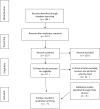Psychosocial Suicide Prevention Interventions in the Elderly: A Mini-Review of the Literature
- PMID: 30687173
- PMCID: PMC6333652
- DOI: 10.3389/fpsyg.2018.02713
Psychosocial Suicide Prevention Interventions in the Elderly: A Mini-Review of the Literature
Abstract
In Europe the elderly population is projected to increase from 18.5% (93.9 million) in 2014 to 28.7% (149.1 million) by 2080. In the United States it is estimated that by 2030 more than 20% of the population will be aged 65 years or over. This specific population is at high risk of unrecognized or untreated psychiatric illnesses and suicide. It is well known that completed suicide rate increases with age in both men and women. Although elderly people attempt suicide less often than other age groups, they show a higher completion rate. Generally, the methods chosen by elderly are more lethal, the intent is more serious, they are more determined, and they show fewer warning signs than the younger population. A recent systematic review and meta-analysis of psychosocial intervention, following self-harm in adults, found that cognitive behavioral therapy was the most effective therapy in these patients. Unfortunately, there have been few reported trials of other potentially effective interventions. Because the scientific literature on psychosocial suicide prevention interventions in the elderly is still scant, we conducted a mini-review in order to take stock of the situation. Studies were identified through electronic searches of the Cochrane library, MEDLINE, Scopus and the Web of Science databases. PRISMA guidelines were followed and only seven articles met the inclusion criteria. No firm conclusions can be drawn about this topic because there is still very little data and studies use inconsistent outcome measures and designs. Nonetheless, the existing data suggests that psychosocial interventions are promising.
Keywords: attempted suicide; elderly; mini-review; psychosocial intervention; suicide.
References
Publication types
LinkOut - more resources
Full Text Sources
Miscellaneous


